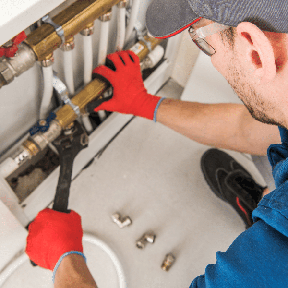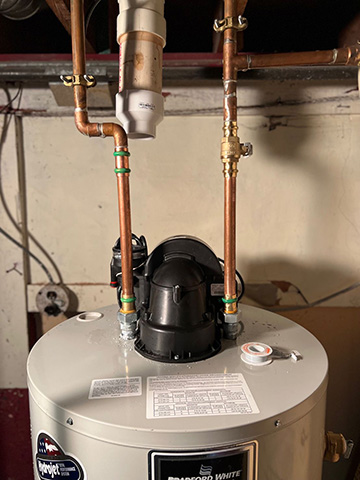Whether you're already active as a commercial plumber or are just getting started in plumbing entirely, there are some significant factors that come into play when moving into residential plumbing services. These include differences in the type of work that you'll be doing, such as more repairs than installations, dealing with a different type of client, handling different types of fixtures and similar concerns. In this post, we'll cover all these topics and more.

A residential plumber is one that has focused their experience and education on serving homeowners. Because there are significant differences between residential and commercial plumbing, this type of plumber is better suited to handle the many plumbing issues that can arise at a residence, whether it's a leaky faucet, a clogged drain, adding in new fixtures, or designing an entirely new system.
When you're working with plumbing, there are two basic residential plumbing systems involved. You'll take a different approach to plumbing repairs depending on which system it is. As with commercial, the water supply systems include smaller pipes under pressure, providing water that comes out at your fixtures at a fast rate. On the other end of a residential plumbing system is the drain system, which removes the water from your home, and typically includes much larger pipes that are not under significant pressure.
A home's plumbing system starts with a water supply, usually a city water valve attached to a meter and water main. Once the water reaches a home, it's distributed across the water supply lines to fixtures, such as sinks, bathtubs, showers, dishwashers, clothes dryers, toilets, and similar features. For the majority of these water outlets, the water must be drained away in a drain system, which typically flows at a much lower rate than your supply system, requiring drain lines to be much larger.

A home typically has supply lines, fixtures, and drain lines. Water supply lines lead from a water main, well, or cistern to provide water to fixtures. Water heaters are also filled at this point, but are an ambiguous part of the system, because they are both a fixture and a source of water, as they heat up the water for use in a home. After being used in fixtures, such as when sinks or showers are used, the water then must be drained away to leave the home for septic treatment, whether through a sewer system, septic tank and drain field, or waste lagoon.
Commercial plumbing may have a range of additional features to handle tasks such as recycling greywater into toilets or irrigation, increasing or decreasing pressure for specific features, automatically tripping a fill valve if an aesthetic feature begins to run low, adding chemicals into the water, or similar aspects of the commercial building's operation. By comparison, residential plumbing is relatively simple, with fewer features and complexities, though you will spend more time talking with clients.
Residential plumbing systems are less complex than their commercial counterparts, which also makes design easier. However, there are factors you'll need to take into consideration with your clients, such as including a hot water return on the master bathroom supply, running fixtures in series or parallel from a manifold, whether pressure reducers will be needed, and similar concerns. Though most new construction has specs in place to deal with these issues, renovations or repairs provide more flexibility.
Considering taking up residential plumbing repairs and services? Merit Brass' extensive line of fittings helps ensure you'll spend minimal time completing each project, allowing you to enjoy better job site efficiency, lower labor costs, and improved profitability.
EXPLORE YOUR PIPE FITTING NEEDS
Authors: Authors: Hedy Hemlick, Marketing Coordinator and Marcus Estrella, Director of Product Line Management
3/28/2025 1:32:29 PM